Ultrasonic atomizing nozzle - swirl type
The vortex atomizing nozzle adopts a unique cavity design, which uses fast rotating airflow to produce a wider and more stable spray beam. By adjusting the distance between the atomizing head and the workpiece, the vortex nozzle can produce a conical spray beam with an adjustable diameter.
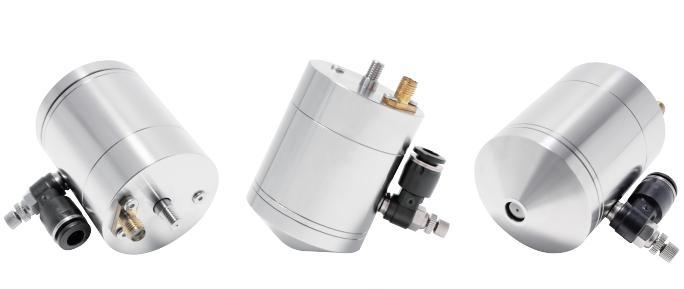
Swirl atomizing nozzle at different angles
Experimental demonstration
Equipment parameters
Equipment model: HC-LAXW-GL Spraying width: 5-60mm Air pressure: <0.1Mpa
Frequency range: 30-120kHz Liquid viscosity: <50cps Working temperature: 20-80℃
Atomized particles: 5-60um Spraying height: 30-80mm Spray flow rate: 5-60ml/min
Experimental demonstration
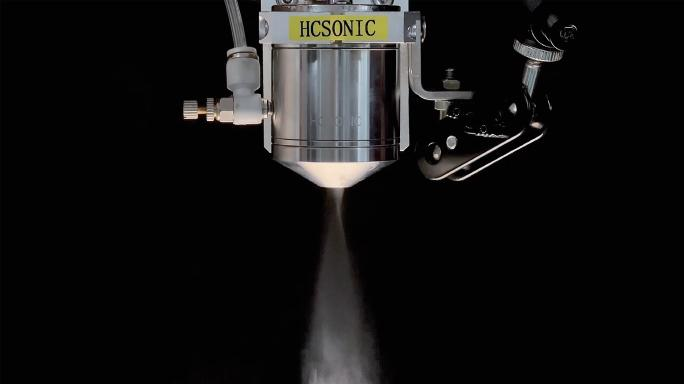
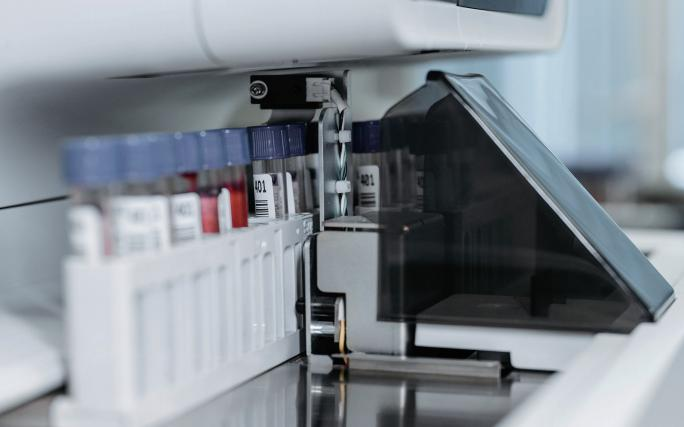
Ultrasonic vortex atomization spray
Ultrasonic atomization application range
 |
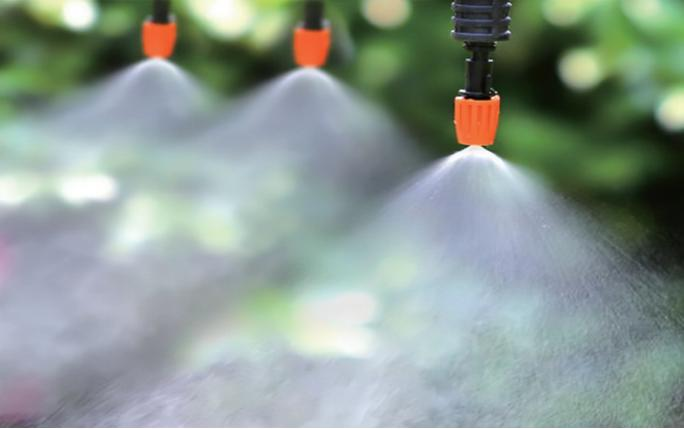 |
 |
|
Biomedicine 1. Spraying of vascular stents and other medical devices for transplantation; 2. Spraying of blood collection tubes and syringes for drug microencapsulation; 3. Spraying of diagnostic test equipment/drug spray drying; 4. Spraying of proteins/enzymes and reagents/spraying of sutures and surgical mesh; |
Agricultural field The ultrasonic atomization irrigation system can more accurately control the distribution of water, reduce water waste, and improve irrigation efficiency. In addition, ultrasonic atomization technology can also be used for the prevention and treatment of plant diseases. By spraying pesticides through atomization, the surface of plants can be covered more evenly, improving the use effect of pesticides. |
Manufacturing industry 1. Spice, flavoring and oil spraying/spray drying ceramics; 2. Slurry/suspension atomization/solvent and adhesive bonding; 3. Chemical reaction vessel combustion; sol-gel spraying; |
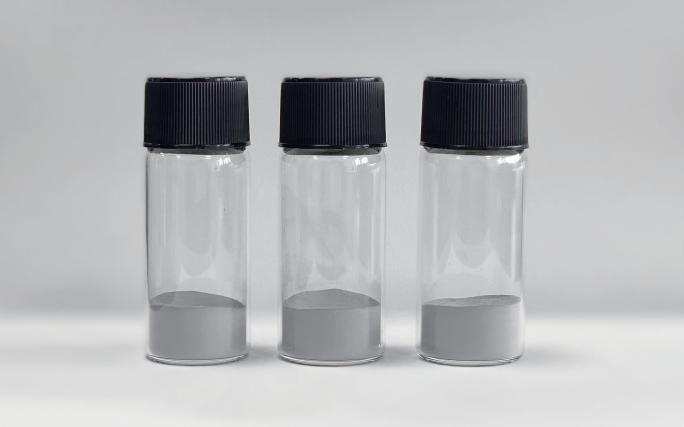 |
 |
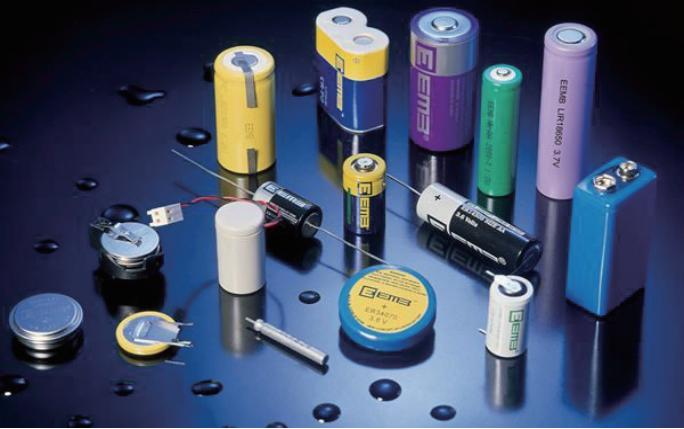 |
|
Nano powder 1. Chemical reaction vessel combustion; 2. Sol-gel spraying; 3. Atomization method for metal powder; |
Electronic products 1. Spraying flux/producing solder powder for through-hole circuit board assemblies; 2. Spraying photographic developer on semiconductor chips and flat panel displays; 3. Spraying flux/spraying superconductor substrates on SMT circuit boards and components; 4. Deposition of microspheres on flat panel displays and touch screens; |
New energy 1. New energy industries such as hydrogen; 2. Batteries, supercapacitors; 3. Fuel cells, solar cells and other fields; |
FAQ Navigation
F: How to avoid ultrasonic atomization head clogging?
A: (1) Understand the characteristics of the liquid before atomization. If the viscosity is too high or the solid content is too high, pre-treatment is required.
(2) Clean the pipeline within a short period of time after the equipment is operated.
F: What to do if the ultrasonic atomizer head is clogged?
A: The size of the inlet and outlet of the ultrasonic atomizer head is mostly 5mm. You can use a fine needle with a diameter less than 5mm to pierce the hole. After the hole is pierced, use a solvent to clean the pipeline.
F: Does the liquid supply system have an impact on ultrasonic atomization?
A: The liquid supply has a great impact on the ultrasonic atomization effect. The instability of the liquid supply system may lead to a series of problems such as intermittent atomization and nozzle clogging. Therefore, when choosing a liquid supply pump, you must also communicate with our technical staff.
F: Is it appropriate to always process samples at 70% power?
A: You should try other power levels and see how they affect the results. If you get the same results at 50%, you don't need to go to 70%. However, it is recommended to keep the power below 80% to extend the life of the equipment.
F: Is it true that the higher the air pressure during ultrasonic atomization, the better?
A: Whether ultrasonic atomization can be achieved has nothing to do with air pressure. Air pressure is only a cooling device and a binding guide. Customers should adjust the appropriate air pressure according to the on-site conditions during the spraying process. Excessive air pressure will damage the atomization surface.
F: Why is the mist beam intermittent during the atomization process?
A: (1) It is related to the liquid composition itself. For example, high molecular organic solution and ultrasound will produce a violent reaction, which will produce a large number of bubbles at the liquid inlet, causing the atomization mist beam to be intermittent. If the liquid composition cannot be changed, you can use a side-supply atomizer nozzle to change this situation.
(2) There is a problem with the sealing of the liquid supply pipeline. Bubbles enter the pipeline, causing the mist beam to be intermittent. The pipeline needs to be checked and replaced if necessary.